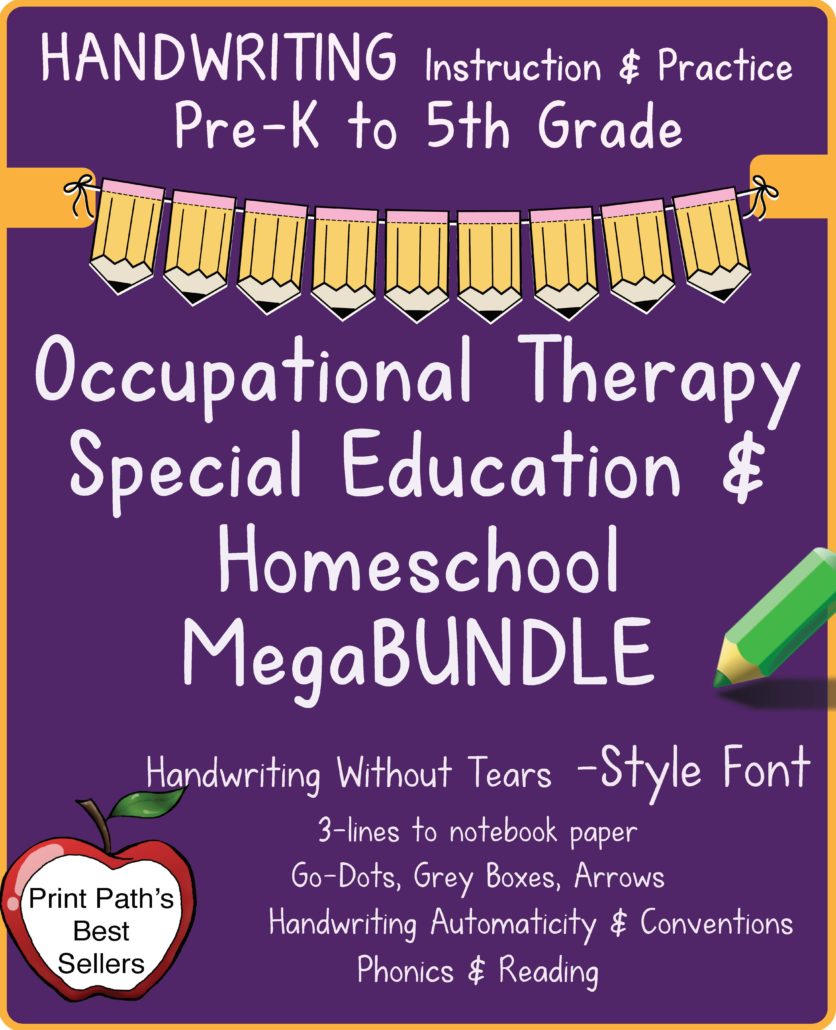Primary Handwriting Fluency and Writing Skills
It is important for primary students to have handwriting fluency and writing skills. This allows them to be able to communicate their ideas effectively. There are many activities that can help improve these skills but it is critical to understand what areas need to improve. Researchers took a closer look at primary handwriting fluency and writing skills.

How Important is Handwriting in Elementary School?
Typically for primary students’ writing, students write from a knowledge-telling approach. They simply write down what they know. Drawing ideas from their memories, they write them down. There is little planning, reflection or revising.
Previous research indicated that there is an association between handwriting fluency and writing quality in primary grade students. If students have difficulties with handwriting fluency, writing can be influenced by:
- cognitive overload if students are working very hard to form letters.
- taxing working memory.
- a loss of ideas if their handwriting is too slow.
- spelling.
Methodology of the Study on Primary Handwriting Fluency
This study was the largest study to date with 4950 children (2596 girls, 2354 boys) examining the association between handwriting fluency and writing quality.
Each participant was evaluated to determine whether handwriting fluency made a statistically unique contribution to predicting primary grade students’ writing quality on a functional writing task. This was investigated after controlling for attitude towards writing, students’ language background, gender, grade, and placement due to class and school were first controlled.
In order to assess handwriting fluency, teachers administered a copying task. Students were asked to copy a short paragraph as quickly and accurately as possible within a 90 second time period. Primary handwriting fluency was calculated by counting the correct letters written divided by 1.5 minutes to determine a handwriting fluency per minute score.
To determine writing skills, the students had to complete a functional writing task in 45 minutes – writing a letter to researchers about their favorite activities during recess. The students received brief instruction and watched a video. The teachers did not help during the actual writing task.
The writing pieces were then scored based on 8 characteristics: audience awareness, organization, content relevance, vocabulary, sentence construction, spelling, legibility and punctuation.
Students’ attitude towards writing was evaluated using a survey.

Handwriting Rubrics
Results of the Study on Primary Handwriting Fluency and Writing
Following data analysis, the results regarding writing skills indicated the following:
- writing quality scores increased between grades one and three by about four-fifths of a point on a five-point scale over the same time period.
- students in higher grades produced papers of higher quality than those in lower grades.
- girls produced papers of higher quality than boys.
- the gender gap tended to widen in higher grades.
- children’s attitude towards writing predicted the quality of their writing
Statistically significant differences in handwriting fluency were recorded:
- increased from one grade to the next – handwriting fluency more than doubled between grades one and three.
- girls were faster handwriters than boys.
- gender gap tended to widen from across the grades.
Handwriting fluency was responsible for a statistically significant 7.4% of the variance in the writing quality of primary grade students.
Conclusion
The researchers discovered three major findings:
- grade and gender are related to handwriting fluency and writing quality.
- handwriting fluency predicts writing quality.
- attitudes, language background, and context predict writing quality.
Reference:
Skar, G. B., Lei, P. W., Graham, S., Aasen, A. J., Johansen, M. B., & Kvistad, A. H. (2021). Handwriting fluency and the quality of primary grade students’ writing. Reading and Writing, 1-30.
Read more on the importance of handwriting for writing skills
Read more on handwriting fluency and letter practice
Need Resources to Help with Primary Handwriting?

Handwriting Bundle – HWT Style Font
Pre- K, Kindergarten, First Grade Handwriting Worksheets – This Handwriting Bundle for PreK-5th Graders is created by school-based Occupational Therapist, Thia Triggs of Print Path. This Handwriting Without Tears© -style letter font, uses 3-lines to best support your students. There are Go-Dots, Gray-Boxes, and Simple Arrows that inform rather than confuse learners. Best practices include research-based methods incorporating the application of developmental and motor learning theories to benefit your struggling learners.


